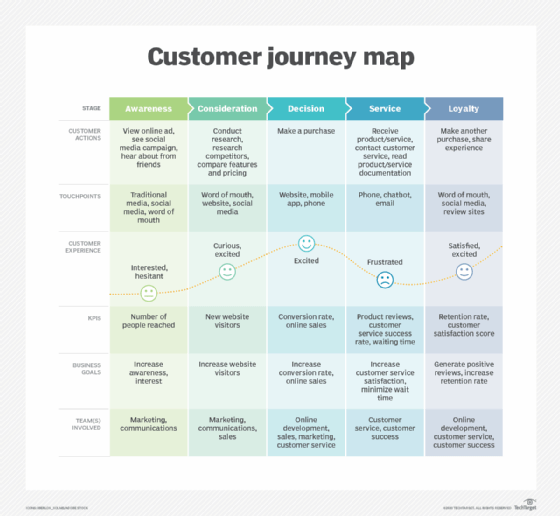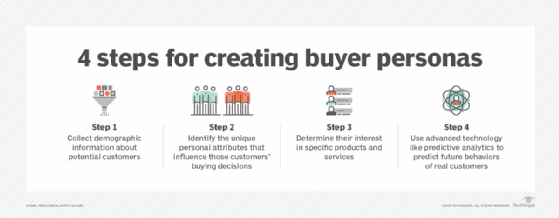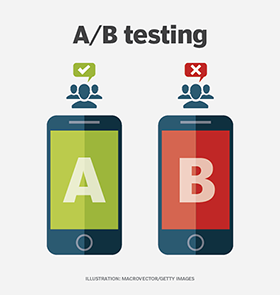
10 marketing automation best practices
Learn how marketing automation best practices, like using behavior-based triggers and A/B testing, can help marketers reach and engage more audiences.
Digital marketing has evolved significantly since the days of just building websites, collecting email addresses and sending monthly newsletters to get a message to a broad audience.
Strategies, tactics and tools continue to advance so marketing teams can tailor messages to their target audience, with more information about those individuals than ever before. Marketing automation makes this possible. It's both a tactic and a tool that enables teams to better attract, convert and nurture prospects into customers.
Marketing automation uses software to automate both common and complex tasks, enabling teams to streamline processes, enhance efficiency and deliver personalized experiences to target audiences. With marketing automation, teams can focus on strategic initiatives, creativity and building meaningful relationships with their audience.
While marketing automation involves implementing a new tool, it also requires a strategic mindset and a commitment to aligning technology with business goals. Explore best practices for teams looking to embrace marketing automation effectively.
1. Create a customer journey map
A customer journey map provides a visual representation of the customer's interactions with a brand from the initial contact through post-purchase. Understanding this journey helps marketers identify key touchpoints, pain points and opportunities for engagement.
With a customer journey map, marketers can tailor their automation workflows to address specific needs at each stage. This strategy can enhance personalization, increase customer satisfaction and ensure automated interactions align with the customer's experience.
To begin, marketing teams should outline their goals. Whether it's lead generation, customer retention or improving CX, clear objectives can guide an automation strategy and customer journey.

2. Develop engaging content
Engaging content is the heart of successful marketing. It captivates the audience, builds brand affinity and encourages action.
Automated content or messages should be compelling, timely and resonate with the audience. Automation is more effective when high-quality content supports it. If marketers develop engaging content for automated emails, social media posts and other channels, they can ensure the target audience remains interested and responsive throughout the customer journey.
3. Plan a lead management strategy
Effective lead management helps convert prospects into customers. A well-defined strategy ensures customer-facing employees nurture leads appropriately, preventing potential customers from slipping through the cracks.
Automation can streamline these processes. With a solid lead management and scoring strategy, marketers can use automation to deliver targeted content, track behavior and automatically transition leads to the sales team when they exhibit buying signals.
4. Generate buyer personas
Buyer personas lay out the target audience's preferences, pain points and motivations. This insight is critical to create personalized and relevant marketing messages, and marketing automation becomes more effective when it's tailored to specific buyer personas.
If marketing teams can understand their target market on a deeper level, they can create automated workflows that resonate with the unique needs and preferences of different segments. This leads to higher engagement and conversions.

5. Create behavior-based triggers
Behavior-based triggers respond to user actions, enabling real-time, personalized interactions. This effort enables timely automated messages that align with the user's current interests or needs.
Overall, behavior-based triggers enhance the relevance of automated communications. Whether they send a follow-up email after an online interaction or recommend products based on past purchases, this approach strengthens customer engagement and drives conversions when a user is most likely to engage.
6. Use segmentation for personalization
Segmentation helps marketing teams divide the overall contact database into different buckets. They can base these lists on demographic information, user behaviors, preferences from past interactions or purchases, and first-party data.
With segmentation, marketers can create more personalized communications, which increase the messaging's relevance and improves CX. If the team builds out automated workflows, segments could qualify for different journeys and marketers can have one-to-many interactions with various audience groups.

7. Embrace A/B testing
Marketing teams should regularly conduct A/B tests on various elements of active campaigns, such as subject lines, images and calls-to-action, to see how they perform. When they analyze the results, they can fine-tune their approach and maximize the effectiveness of their efforts.
A/B testing different campaign elements often pushes engagement and conversion rates higher, as it delivers the winning test result to a large enough sample audience to ensure future prospects are more likely to take action.
8. Nurture customer advocacy
Turning customers into advocates can significantly improve a brand's likelihood of success. Advocates are more likely to refer others and become repeat customers, therefore contributing to long-term business growth.
Marketers can use automation to nurture customer relationships beyond the purchase. For example, they can implement automated campaigns that seek reviews, encourage social sharing or send exclusive loyalty offers, which can turn satisfied customers into enthusiastic brand advocates. In turn, those advocates contribute to a positive brand image and can attract new business.
9. Integrate marketing and sales teams
When businesses implement marketing automation practices, they should integrate their marketing automation platform with their CRM system to enable collaboration between the marketing and sales teams. This alignment streamlines communication and ensures a seamless handoff of leads between departments.
For sales teams specifically, visibility into past and current interactions from marketing campaigns enables reps to have more enriched conversations with prospects and either address or get ahead of customer needs and pain points.
Additionally, this integration can equip the team with the necessary skills to make the most of the automation tools. Training both teams on the marketing automation platform ensures everyone understands how to use it effectively.
10. Monitor and analyze metrics
Lastly, marketers should regularly monitor KPIs to evaluate the success of marketing automation efforts. This analysis offers valuable insights into what works and what needs adjustments.
Successful marketing teams change campaigns that don't perform well and recreate successful parts of other campaigns to drive similar results. When teams have good data evaluation practices, organizations can better measure ROI, the strategy's effect on the business and resources needed for future growth.
Griffin LaFleur is a MarketingOps and RevOps professional working for Swing Education. Throughout his career, Griffin has also worked at agencies and independently as a B2B sales and marketing consultant.






